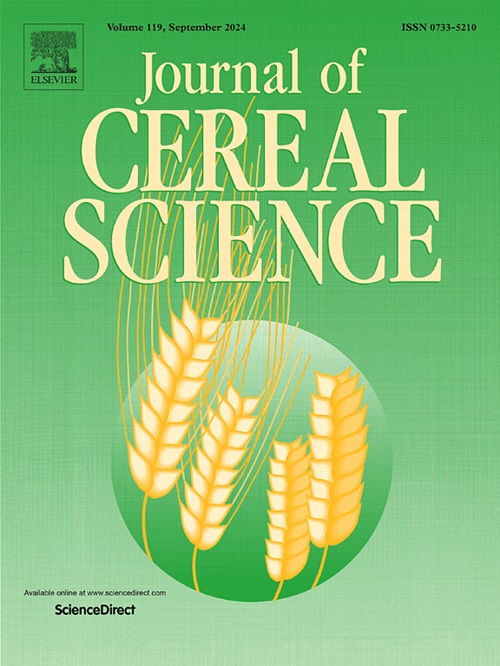Thermal processing improved dietary fiber quality of whole grain highland barley: Studies on structural, physiochemical and functional properties
IF 3.9
2区 农林科学
Q2 FOOD SCIENCE & TECHNOLOGY
引用次数: 0
Abstract
The effects of thermal treatments including atmospheric boiling (AB), high-pressure boiling (HPB), and baking (B) on structural, physicochemical, and functional properties of dietary fiber (DF) of whole grain highland barley (HB) were investigated. Thermal treatments led to the breakage of 3, 4-linked rhamnopyranose and 2-linked mannopyranose and decreased molecular weight and decreased fractions of rhamnose and mannose of water-soluble dietary fiber (SDF). The glucose molar ratio of SDF of AB-HB, HPB-HB and B-HB was increased by 53.18%, 51.52% and 47.75%, respectively, compared to that of control HB. Thermal treatments resulted in lower apparent viscosity, storage modulus (G′), and loss modulus (G″) of water-insoluble dietary fiber (IDF). Thermal treatments decreased the particle size and increased the specific surface area of DF, which increased the adsorption capacity of DF including glucose adsorption capacity, cholesterol adsorption capacity and nitrite adsorption capacity compared to those of control HB. In addition, thermal treatments increased the antioxidant activities, and inhibitory capacities against pancreatic lipase of DF. HPB and B treatments increased the inhibitory effect of SDF against α-amylase and α-glucosidase, and inhibitory effect of IDF against α-glucosidase. This study provided insights into DF of thermally-treated HB in the applications of functional foods.
热加工提高青稞全粒膳食纤维品质的结构、理化和功能特性研究
研究了常压煮沸(AB)、高压煮沸(HPB)和烘烤(B)三种热处理方式对全麦青稞(HB)膳食纤维(DF)结构、理化和功能特性的影响。热处理导致3,4 -链鼠李糖和2-链甘露糖的断裂,降低鼠李糖和甘露糖水溶性膳食纤维(SDF)的分子量和含量。与对照HB相比,AB-HB、HPB-HB和B-HB的SDF葡萄糖摩尔比分别提高了53.18%、51.52%和47.75%。热处理降低了水不溶性膳食纤维(IDF)的表观粘度、贮存模量(G′)和损失模量(G″)。热处理降低了DF的粒径,增加了DF的比表面积,增加了DF的吸附能力,包括葡萄糖的吸附能力、胆固醇的吸附能力和亚硝酸盐的吸附能力。此外,热处理提高了DF的抗氧化活性和对胰脂肪酶的抑制能力。HPB和B处理增强了SDF对α-淀粉酶和α-葡萄糖苷酶的抑制作用,增强了IDF对α-葡萄糖苷酶的抑制作用。本研究为热处理血红蛋白的DF在功能性食品中的应用提供了新的见解。
本文章由计算机程序翻译,如有差异,请以英文原文为准。
求助全文
约1分钟内获得全文
求助全文
来源期刊

Journal of Cereal Science
工程技术-食品科技
CiteScore
7.80
自引率
2.60%
发文量
163
审稿时长
38 days
期刊介绍:
The Journal of Cereal Science was established in 1983 to provide an International forum for the publication of original research papers of high standing covering all aspects of cereal science related to the functional and nutritional quality of cereal grains (true cereals - members of the Poaceae family and starchy pseudocereals - members of the Amaranthaceae, Chenopodiaceae and Polygonaceae families) and their products, in relation to the cereals used. The journal also publishes concise and critical review articles appraising the status and future directions of specific areas of cereal science and short communications that present news of important advances in research. The journal aims at topicality and at providing comprehensive coverage of progress in the field.
 求助内容:
求助内容: 应助结果提醒方式:
应助结果提醒方式:


